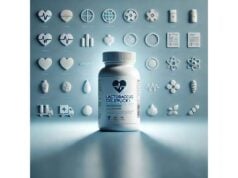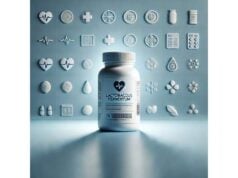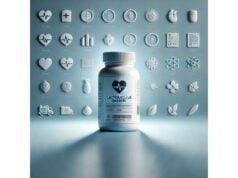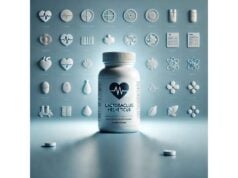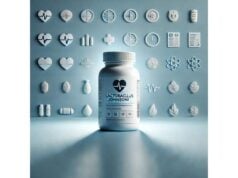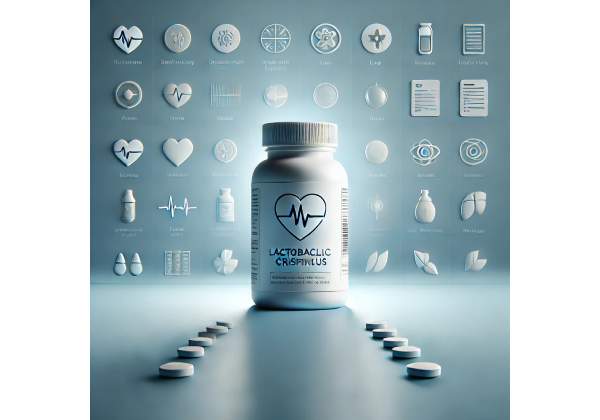
A healthy vaginal ecosystem is usually dominated by Lactobacillus species—especially Lactobacillus crispatus. This lactic acid–producing microbe helps keep the vaginal pH low (typically 3.8–4.5) and discourages overgrowth of bacteria linked to bacterial vaginosis (BV), urinary tract infections (UTIs), and inflammation. Unlike general “gut probiotics,” L. crispatus is a niche specialist: it adheres to vaginal epithelial cells, makes lactic acid (L- and D- isomers), and can produce antimicrobial compounds like hydrogen peroxide and bacteriocins. Clinical research—particularly with the intravaginal strain CTV-05 formulated as Lactin-V—shows promise for reducing BV recurrence after standard antibiotic therapy. Early trials also suggest a role in lowering recurrent UTI risk by restoring protective Lactobacillus dominance. Because benefits are strain- and route-specific, success depends on choosing the right product, using it at the right time (often after antibiotics), and following a dosing schedule long enough to stabilize the microbiome. In the guide below, you’ll learn what L. crispatus does, who may benefit, how to use oral versus vaginal formats, safety considerations, and what the best current evidence actually shows.
Essential Insights
- Dominant L. crispatus communities are linked to lower BV recurrence and fewer urogenital infections.
- Intravaginal products (e.g., CTV-05) used after antibiotics show the most consistent benefits.
- Practical dosing: ~10⁹–10¹⁰ CFU per dose; schedules often load daily for 3–5 days, then maintenance twice weekly for 8–10 weeks.
- Mild gas, discharge changes, or transient irritation can occur; avoid use without medical guidance if severely immunocompromised.
- People with recurrent BV or UTIs, especially after antibiotics, are the most likely candidates; pregnant users should consult their clinicians first.
Table of Contents
- What is Lactobacillus crispatus?
- Does it work for BV and UTIs?
- How to use oral vs. vaginal forms
- Dosage: how much and how long
- Mistakes, troubleshooting, and when to avoid
- What the research says right now
What is Lactobacillus crispatus?
Lactobacillus crispatus is a lactic acid bacterium frequently found in a healthy vaginal microbiome. It thrives by fermenting glycogen-derived sugars in vaginal fluid into lactic acid. That acidification is not just a pH number—it’s a frontline defense that suppresses growth of BV-associated organisms such as Gardnerella, Atopobium, Prevotella, and Sneathia. L. crispatus also adheres tightly to epithelial cells, forming a protective “biofilm-like” layer that occupies surface sites and makes it harder for opportunists to attach. Many L. crispatus strains generate both L- and D-lactic acid; the D-isomer, in particular, has been associated with stronger pathogen inhibition and better epithelial barrier support. Some strains also produce hydrogen peroxide and small antimicrobial peptides (bacteriocins), adding selective pressure against BV-associated species.
A key concept is community state types (CSTs)—broad patterns of vaginal microbiota. CST I (often L. crispatus–dominated) is generally associated with lower BV risk, less inflammation, and, in observational studies, reduced susceptibility to certain sexually transmitted infections (STIs). In contrast, “low-Lactobacillus” or polymicrobial states tend to be less acidic and more inflammatory, correlating with recurrent BV and higher symptom burden. While CSTs can fluctuate with menses, sexual activity, hygiene practices, and antibiotics, L. crispatus–dominant states are often the most stable and resilient.
Why supplementation? BV frequently recurs after antibiotics because treatment reduces pathogen load but may not re-establish protective Lactobacillus dominance. Re-seeding with L. crispatus—especially via intravaginal delivery—aims to “lock in” a healthier state during the vulnerable post-antibiotic window. Oral products may support urogenital health indirectly (e.g., by modulating the gut–vagina axis), but direct vaginal application has the clearest mechanistic and clinical rationale at present.
Strain matters. Not all L. crispatus strains behave identically. The best-studied for BV recurrence is CTV-05 (Lactin-V). Other strains may be present in food or multi-strain supplements but lack equivalent clinical data for vaginal outcomes. For UTI prevention, L. crispatus delivered intravaginally has been explored in women with recurrent infections, with encouraging early-phase findings when robust colonization is achieved.
Bottom line: L. crispatus is a keystone species for vaginal health, and targeted use—especially intravaginally and after antibiotics—can help shift the microbiome toward a more protective, symptom-resistant state.
Does it work for BV and UTIs?
Bacterial vaginosis (BV) recurrence: BV is notorious for coming back within weeks to months after standard therapy. Antibiotics reduce BV-associated bacteria but often leave a microbiome “vacuum” that Lactobacillus may or may not refill. Several randomized trials using L. crispatus CTV-05 (Lactin-V) show lower BV recurrence when the probiotic follows a standard antibiotic course. In these studies, participants first completed metronidazole (oral or gel), then used intravaginal L. crispatus on a front-loaded schedule followed by weekly maintenance for several weeks. Compared with placebo, those using L. crispatus had fewer recurrences over 12 weeks and, in follow-up work, showed shifts in genital immunology consistent with a less inflammatory environment. For everyday relevance, this translates to fewer episodes of discharge, odor, and discomfort—and fewer repeat antibiotic cycles.
Recurrent UTIs: The vaginal niche is a gateway to the urinary tract. When the vaginal microbiome is Lactobacillus-depleted or BV-like, uropathogens (such as E. coli) can more easily colonize the periurethral area and ascend. A randomized, placebo-controlled phase 2 trial tested intravaginal L. crispatus for UTI prevention in premenopausal women with recurrent infections. Participants who established strong L. crispatus colonization experienced fewer UTIs than those who did not. The implication is straightforward: restoring Lactobacillus dominance in the vagina may reduce uropathogen access and adherence, thereby lowering UTI risk. Results are dose- and colonization-dependent; consistent use matters, and success tends to be higher when the probiotic is started after pathogen-directed therapy.
Oral vs. vaginal routes: Vaginal application achieves higher local levels of L. crispatus and is the best-studied approach for BV recurrence prevention. Oral probiotics may be reasonable adjuncts for gut and immune support, but direct evidence that oral L. crispatus alone prevents BV recurrence is limited. If your goal is specifically BV control or UTI reduction, prefer intravaginal delivery (especially post-antibiotic) unless your clinician advises otherwise.
Who benefits most?
- People with recurrent BV (multiple episodes per year) who have already tried standard antibiotics.
- Those with recurrent UTIs, particularly when episodes cluster after BV-like symptoms or new sexual activity.
- Users who can follow a structured schedule (loading plus maintenance) and avoid practices that disrupt colonization (see Mistakes section).
Where the evidence is nuanced: For first-time BV, antibiotics remain first-line. For prevention of STIs or obstetric outcomes, research is active but not definitive; any potential benefits should be considered adjunctive to established preventive care (barrier methods, routine screening, prenatal care).
How to use oral vs. vaginal forms
Intravaginal products (most evidence-based for BV recurrence):
These typically supply a defined L. crispatus strain (e.g., CTV-05) in a single-use applicator or capsule designed for vaginal insertion. The common pattern is a loading phase (daily doses for several days) followed by maintenance (e.g., twice weekly) for several weeks. Using the probiotic after completing antibiotics takes advantage of a “reset window” when pathogen load is low and Lactobacillus can reoccupy niches. To boost success:
- Time it right: Begin probiotic application 24–48 hours after finishing metronidazole or clindamycin, unless your clinician provides a different plan.
- Dose consistently: Set reminders for maintenance days (e.g., Mondays and Thursdays) to maintain colonization.
- Mind the vehicle: Some products are oil-based, which can weaken latex condoms or diaphragms. If relevant, check the label and use polyurethane condoms during treatment.
- Expect normal changes: A small amount of transient discharge after insertion is common; it reflects carrier dissolution. Mild irritation often improves with continued use; discontinue and consult a clinician if irritation is moderate to severe.
Oral products (adjunctive):
Oral capsules labeled with L. crispatus are less common than general women’s probiotics. If using an oral product:
- Look for strain transparency and ≥1–10 billion CFU/day.
- Combine with dietary support (adequate fiber, fermented foods) to reinforce microbiome stability.
- Consider oral probiotics as supportive, not as a substitute for intravaginal therapy when BV recurrence prevention is the goal.
Combining routes:
Some clinicians suggest intravaginal L. crispatus for targeted re-seeding plus an oral, multi-strain women’s probiotic for broader support. If using both, there is no need to “stagger” timing beyond practical convenience. Hydration and avoiding vaginal irritants (see below) make colonization more likely.
Hygiene and lifestyle that support L. crispatus dominance:
- Avoid douching and fragranced vaginal products; these raise pH and disrupt protective bacteria.
- Use pH-balanced, unscented external washes only (vulva, not vagina).
- Consider condom use with new or multiple partners; semen temporarily raises vaginal pH.
- Manage menses with products that minimize prolonged retained blood exposure (change tampons/cups regularly).
- If you use spermicides or intravaginal antiseptics, discuss alternatives—some agents are hostile to Lactobacillus.
When to involve a clinician:
- You have recurrent BV or recurrent UTIs and want a plan that pairs antibiotics with probiotic re-seeding.
- You are pregnant or attempting conception.
- Symptoms persist despite 2–3 months of proper use, or you develop pain, fever, foul-smelling discharge, or bleeding.
Dosage: how much and how long
Intravaginal (targeted BV recurrence prevention):
Clinical protocols with L. crispatus CTV-05 (Lactin-V) generally use ~10⁹–10¹⁰ CFU per dose on the following schedule:
- After antibiotics: Complete a standard course for BV (e.g., metronidazole).
- Loading phase: Insert one dose daily for 4–5 days.
- Maintenance phase: Continue twice weekly for 8–10 weeks.
This two-step schedule mirrors the microbiome’s needs: rapid re-seeding to establish early dominance, followed by periodic reinforcement while the ecosystem stabilizes.
Intravaginal (recurrent UTI adjunct):
Doses are similar (≈10⁹–10¹⁰ CFU). Protocols often start after UTI treatment to prevent immediate re-colonization by uropathogens. Some studies used a short daily course (e.g., 5 days) then weekly or biweekly maintenance for several weeks; your clinician may adjust based on your recurrence pattern.
Oral use (adjunct):
For general support, a daily dose of 1–10 billion CFU is reasonable. Because oral L. crispatus data for BV is limited, consider pairing oral use with a documented intravaginal regimen if BV recurrence is your primary concern.
Practical tips for timing and technique:
- Best time of day: Evening insertion allows gravity-assisted retention overnight.
- Before or after sex: Insert after intercourse to avoid displacement; if using oil-based carriers, avoid latex for at least 24 hours (check product label).
- During menses: You may pause during heavy flow (blood raises pH), then resume; some clinicians still recommend uninterrupted use. Follow your care team’s advice.
- Antibiotics overlap: Avoid using intravaginal probiotics at the same time as intravaginal antibiotics or antiseptics. For oral antibiotics, finish the course first, then begin the probiotic within 48 hours unless you’re on a clinician-directed concurrent plan.
How long until results?
- BV recurrence prevention: Differences often appear within 4–12 weeks when the product is used exactly as directed after antibiotics.
- UTI prevention: Benefits track with sustained colonization; expect evaluation over 2–3 months.
When to stop or switch:
- If no improvement after a full cycle (loading plus maintenance), discuss alternatives (e.g., different strain, longer maintenance, addressing behavioral triggers).
- If irritation or burning persists beyond the first few applications, discontinue and seek medical advice.
Mistakes, troubleshooting, and when to avoid
Common mistakes to avoid
- Skipping the post-antibiotic window: The best time to seed L. crispatus is immediately after completing BV antibiotics. Waiting weeks raises the odds that BV-associated species rebound first.
- Stopping after loading: Maintenance dosing consolidates colonization. Stopping early often leads to relapse.
- Using products without strain clarity: “Women’s probiotic” on the label is not enough. Look for L. crispatus plus a strain identifier and a CFU guarantee through expiration.
- Vaginal irritants: Douching, fragranced washes, and intravaginal antiseptics increase pH and damage protective layers.
- Ignoring condom compatibility: Oil-based carriers can weaken latex; choose compatible protection or alternative carriers.
- Not addressing behaviors: New partners, unprotected sex, or smoking can all tilt the microbiome toward BV; probiotics help most when paired with behavior changes.
Troubleshooting tips
- Mild burning or discharge after insertion: Often transient; try bedtime use, ensure hands/applicator are clean, and consider a water-based product if carrier sensitivity is suspected.
- Recurrence after periods or sex: Add an extra maintenance dose after menses or 24 hours after intercourse (if compatible with your product and clinician’s advice).
- Poor colonization on follow-up swabs: Review technique, timing, and concurrent products (e.g., avoid intravaginal antifungals/antiseptics during probiotic weeks unless clinically necessary).
- Mixed symptoms (itching, clumpy discharge): BV and yeast can overlap; seek testing rather than self-treating blindly.
Safety—who should avoid or get guidance first
- Severely immunocompromised individuals (e.g., profound neutropenia, post-transplant) should not start intravaginal probiotics without specialist input.
- Pregnancy: Many clinicians consider Lactobacillus–dominant states favorable, but discuss any intravaginal product with your obstetric provider before use. Protocols may differ by trimester, symptom severity, and history of preterm birth.
- Allergy or sensitivity to excipients (oils, gelatin, lactose): choose alternative carriers.
- Active pelvic pain, fever, foul odor, or bleeding: seek medical evaluation to rule out PID or STI before probiotic use.
- Device users: If you rely on latex condoms or diaphragms, check carrier compatibility.
Drug interactions
- Metronidazole/clindamycin (intravaginal): Do not co-administer with the probiotic in the same time window. Finish the antibiotic course first.
- Systemic antibiotics: Begin L. crispatus after completion, unless part of a clinician-supervised concurrent strategy.
- Antifungals: If treating yeast concurrently, separate timing and confirm with your clinician; some regimens can be staggered safely.
What the research says right now
BV recurrence prevention (post-antibiotics):
Randomized, placebo-controlled trials using L. crispatus CTV-05 (Lactin-V) show lower BV recurrence over 12 weeks when the probiotic follows standard metronidazole therapy. Participants on Lactin-V were more likely to maintain a low pH, high-Lactobacillus community state and reported fewer BV symptoms. Follow-up analyses also identified favorable shifts in genital immune markers, suggesting a mechanistic link between restored Lactobacillus dominance and reduced inflammatory signaling. These findings support a two-step approach: clear pathogens with antibiotics, then re-seed with L. crispatus to stabilize the ecosystem.
Recurrent UTI prevention:
In women with a history of frequent UTIs, an intravaginal L. crispatus regimen reduced episodes compared with placebo when robust colonization occurred. The protective effect appears to hinge on successful, sustained colonization and may be strongest in those whose recurrences cluster after sexual activity or BV-like symptoms. While more phase 3 data would strengthen confidence, current results justify considering L. crispatus as part of a prevention plan alongside behavioral measures and, when needed, targeted antibiotics.
Oral probiotics and broader context:
Meta-analyses suggest probiotics (various Lactobacillus species and routes) can improve cure rates and reduce recurrence when used with antibiotics for BV. However, specific high-quality data for oral L. crispatus in BV are limited compared with intravaginal use. For now, if BV is the main problem, intravaginal L. crispatus after antibiotics is the most evidence-aligned strategy, with oral products as optional adjuncts.
Pregnancy and reproductive outcomes:
Observational studies link L. crispatus–dominant vaginal microbiomes with lower inflammation and more favorable pregnancy outcomes compared with low-Lactobacillus states. Still, clinical trials that prove improved obstetric outcomes with L. crispatus supplementation are not yet definitive. Pregnant individuals should seek personalized guidance rather than self-starting intravaginal probiotics.
What to watch next:
- Larger, multicenter trials of L. crispatus for BV and UTI prevention, including head-to-head comparisons with other strategies.
- Formulation science (carriers, bioadhesive polymers) to improve colonization and condom compatibility.
- Personalized protocols using rapid microbiome testing to time re-seeding and adjust maintenance.
- Integration with behavioral counseling (condom use, smoking cessation, menses management) to sustain benefits.
Bottom line: The strongest current signal for L. crispatus is intravaginal use to reduce BV recurrence after antibiotics, with promising early evidence for recurrent UTI reduction in those who achieve colonization. Oral products may help as adjuncts but are not a substitute for targeted intravaginal therapy when BV recurrence is the primary concern.
References
- Randomized Trial of Lactin-V to Prevent Recurrence of Bacterial Vaginosis 2020 (RCT)
- Sustained effect of LACTIN-V (Lactobacillus crispatus CTV-05) on genital immunology following standard bacterial vaginosis treatment 2022 (Follow-up analysis)
- Randomized, Placebo-Controlled Phase 2 Trial of a Lactobacillus crispatus Probiotic Given Intravaginally for Prevention of Recurrent Urinary Tract Infection 2011 (RCT)
- Bacterial Vaginosis – STI Treatment Guidelines 2021 (Guideline)
- Bacterial vaginosis: a review of approaches to treatment and prevention 2023 (Review)
Disclaimer
This guide is educational and does not replace personalized medical advice. Lactobacillus crispatus products—especially intravaginal formulations—should be used with guidance if you are pregnant, severely immunocompromised, have recurrent or complicated infections, or are managing chronic conditions. Always consult a qualified health professional before starting, stopping, or combining probiotics with prescription treatments.
If this article was useful, please consider sharing it on Facebook, X (formerly Twitter), or your favorite platform, and follow us for future updates. Your support helps us keep producing clear, evidence-based health content.


